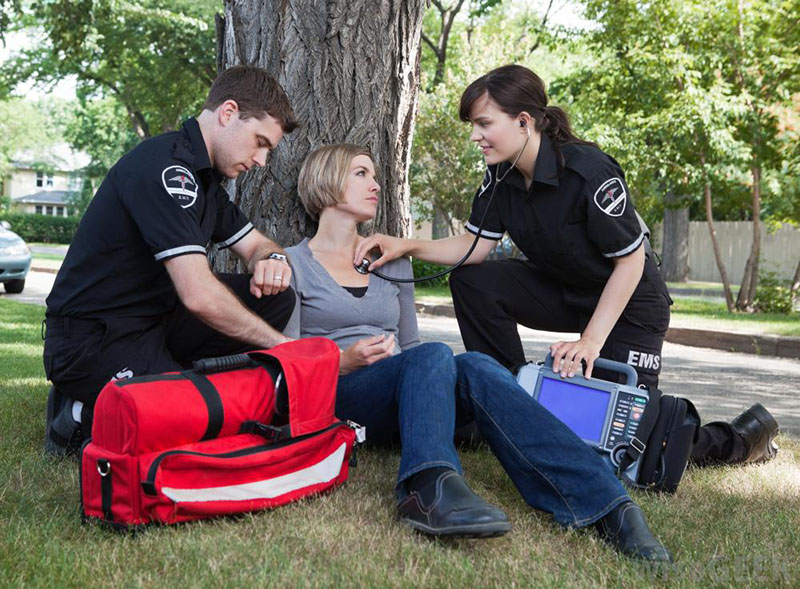The field of emergency medical care (EMS) is a noble and vital profession, offering a rewarding career path that focuses on making a difference in lives and providing crucial medical care. It’s a field that provides tremendous growth opportunities and a high demand for qualified professionals. In this article, we’ll guide you through the steps to become an EMT and paramedic, exploring the various training options available, including DSHS approved EMS training course.

Understanding the function of EMTs and Paramedics
Emergency Medical Technicians (EMTs) and paramedics are first responders who provide immediate medical care during emergency situations. They are trained in assessing patients, providing essential medical treatments and transferring patients securely to medical facilities for further care. Paramedics and EMTs play a essential role in stabilizing patients in critical times, making split second choices, and providing compassion in times of emotional distress.
Step 1: Become an EMT:
You must complete the required training and education program that may differ based on what certification level you’re trying to reach. There are three different levels of EMT certification.
1. EMT Basic (EMT B) It is a beginner-level certification that will require between 100 and 150 hours of education. EMTs-B have been trained in basic medical treatment, including CPR, bleeding controls, and basic management of airways.
2. EMT-Intermediate: EMTI is a degree which requires more education. The amount of training required is different from state to another. In certain areas EMT-I is integrated with EMT-B. In others, it takes between 200 to 400 hours of instruction, including expanded medical skills as well as intravenous therapy.
3. EMT Paramedic (EMT P) EMT-P is the highest certification level for EMTs. The training required to earn this credential typically lasts from 1,000 to 1,800 hours. Paramedics can carry out advanced medical procedures such as administering medications as well as interpreting EKGs, and performing advanced airway management.
Step 2: Pursuing Paramedic Certification
If you aspire to become paramedics, you need to first complete the EMT-B or EMT-I level and gain some hands-on experience. Then, you are able to enroll in a paramedic training program that typically takes one to two years to complete. This comprehensive program will teach you advanced medical concepts, and will equip you with the necessary skills and experience to handle critical situations by yourself.
Step 3. Examining EMT Training Options:
When you’re looking for EMT training, you have various options dependent on the level of certification you aim to achieve. EMT classes are typically offered through medical trade schools and community colleges at all certification levels. They offer a combination of classroom instruction, hands-on learning and encounters in field and clinic situations.
If you’re searching for a more in-depth and extensive EMT training that will lead to a degree and colleges might offer EMT training at the level of EMT-Paramedic. These courses will give you an in-depth understanding of emergency medicine, which will allow you to make better medical decisions and provide care for patients.
Step 4: Make sure you have DSHS certified EMS training:
If you’re aspiring to become EMTs and paramedics, it is essential to make sure that the training program you select is DSHS certified. The Department of State Health Services also known as DSHS has the authority to approve EMS Training Courses to ensure an excellent education. If you choose to enroll in a DSHS approved EMS training program, you will be able to rest assured that you are receiving excellent instruction and meet the requirements to be certified.
Paramedics and EMTs are both highly regarded careers. EMTs and Paramedics are primary emergency responders and play a crucial role in rescuing and providing immediate medical treatment in emergencies. To embark on this lifesaving journey, those who want to become EMTs and paramedics must complete the required training and education programs. According to the level of certification that is desired, applicants can pick from several EMT training options, which include community colleges, medical trade schools, and university programs.
When assessing the various options for training, you should also ensure that the EMS course is DSHS certified. This will guarantee that you are receiving a quality education that is up to the standards required to obtain EMT certification and paramedic certification.
The demand for highly skilled emergency medical professionals is on the rise as the demand for emergency medical professionals continues to increase, joining the field of EMS can provide a wide range of opportunities and the opportunity to make a an enormous impact on the lives of others. If you are an EMT Basic or are looking to become a paramedic, your dedication to critical medical care will pay off with an exciting and rewarding career in emergency services.